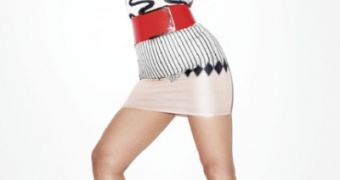Only a few days ago, we were telling you about a special “shape” issue of V Magazine, which features a plus-size and a regular-size model side by side in what is certainly a first photospread of the kind. The plus-size model, Crystal Renn, is now very appreciated in the fashion industry – and she’s not alone in this category, as the entire industry seems, for a change, open to accepting women with curves.
Or so it would seem at first sight, Liz Jones argues in a piece for the Daily Mail. As we’re starting to see more models who aren’t like those teenage girls with “the vital statistics of an umbrella spoke” that designers are so fond of, the real question is whether the fashion industry is really ready for plus-size. The problem, Jones believes, is that it might be the average women themselves, the target customers of glossy magazines and fashion shows, who are not yet willing to accept that a change is needed in terms of measurements of the models.
“The tide has turned, I hear you rejoicing. The dictatorial dingbats of the fashion industry have finally acknowledged that we want to know how that jacket looks when buttoned over a pair of big breasts, or how those high-waisted trousers will fit over an ample bottom. What other evidence is there that the industry, perhaps mindful of the fact that the recession means we are all making far more careful choices when it comes to clothes, has come to its senses?” Jones says as to the new tendency.
More women with measurements that are closer to those of an average woman and, at the same time, models who are no longer teens but rather well into their 40s, are being featured in today’s magazines. Still, designers and industry insiders argue the average Jane does not want to open a mag or turn on the TV and see someone who looks like her, because it’s this glamorization that the industry relies on that’s appealing to her. Should this be the case, the change in perspective as to the “ideal woman / model” has to take place at the level of the consumer, and not only with those who promote said image.
“We believe the woman in the photograph actually looks like that, and that we should look that way, too. And if we don’t, then we are just not trying hard enough,” Jones says. “If we really want the industry to change and not to pacify us with tokenism, with one-off gimmicky shoots, and to use curvier women, shorter women, older women in issues that aren’t about ‘shape’ or ‘age,’ then we need to force it to change, not with model health inquiries or hand wringing but by voting with the only method it will listen to: our wallets.” she concludes by saying.

 14 DAY TRIAL //
14 DAY TRIAL //